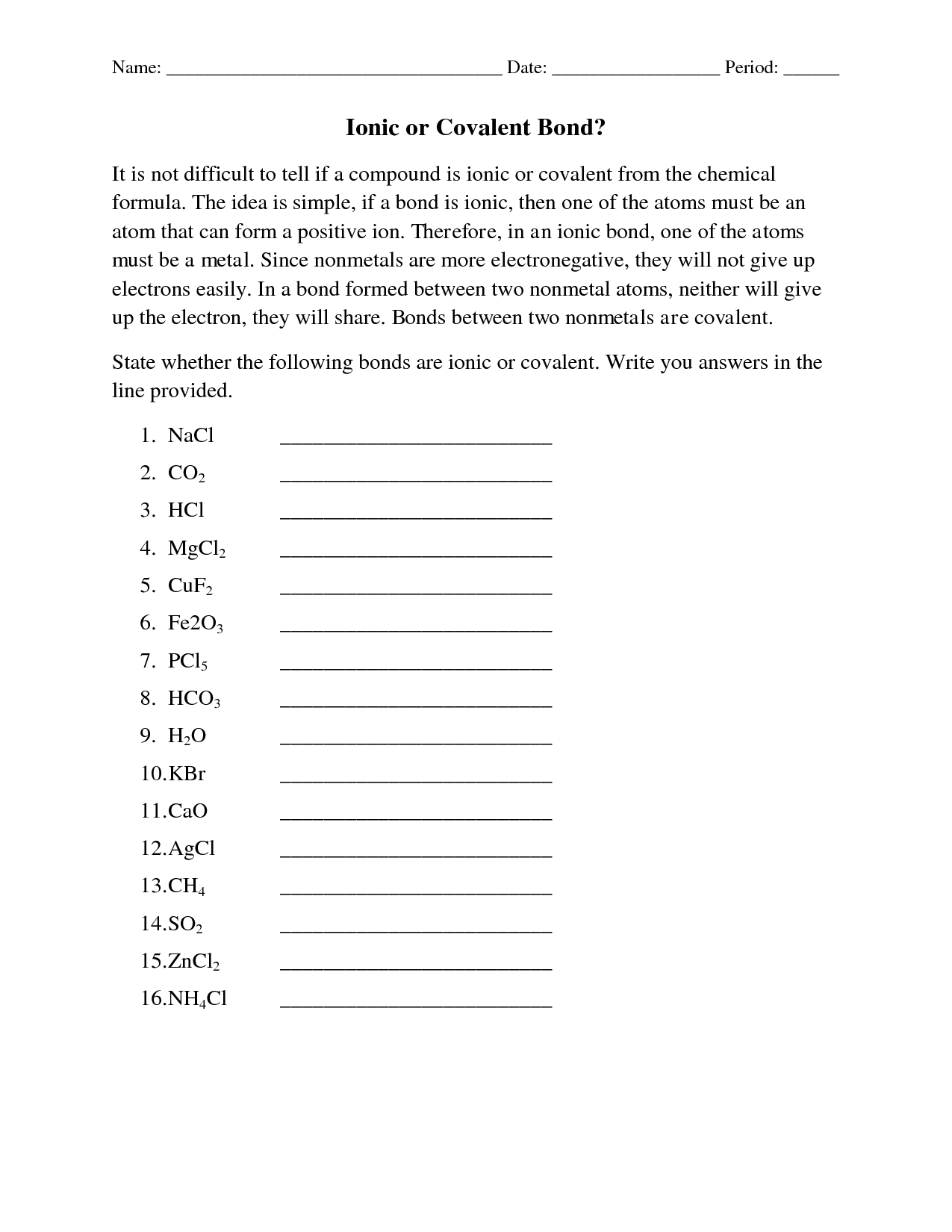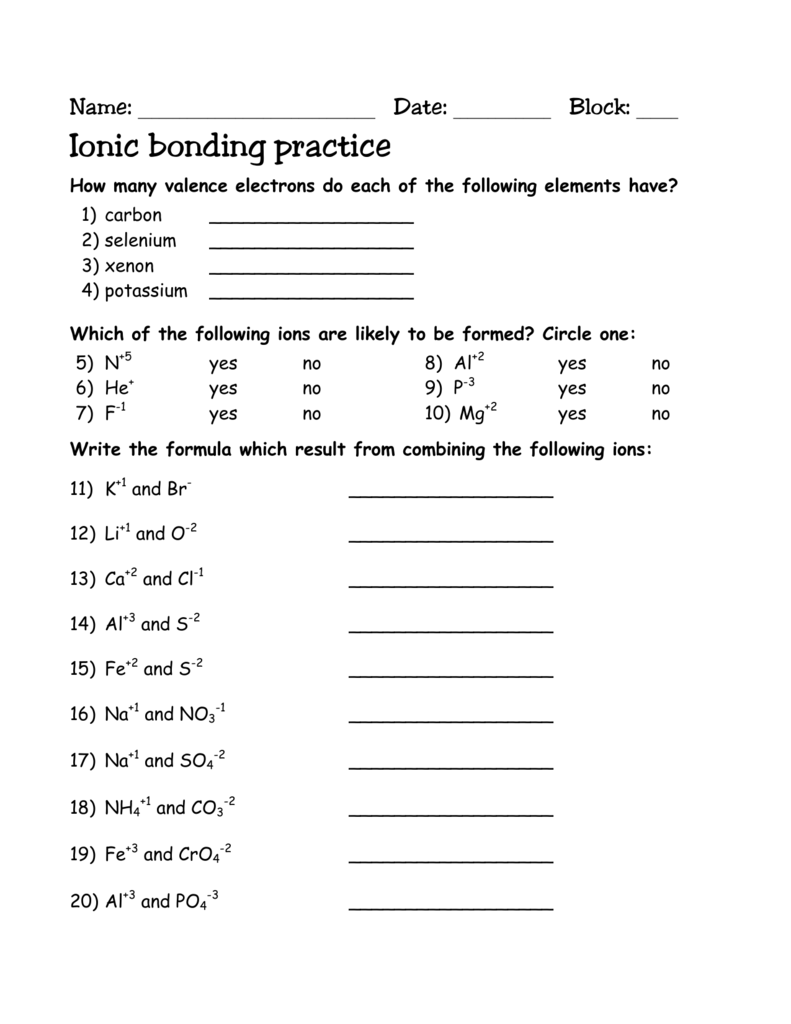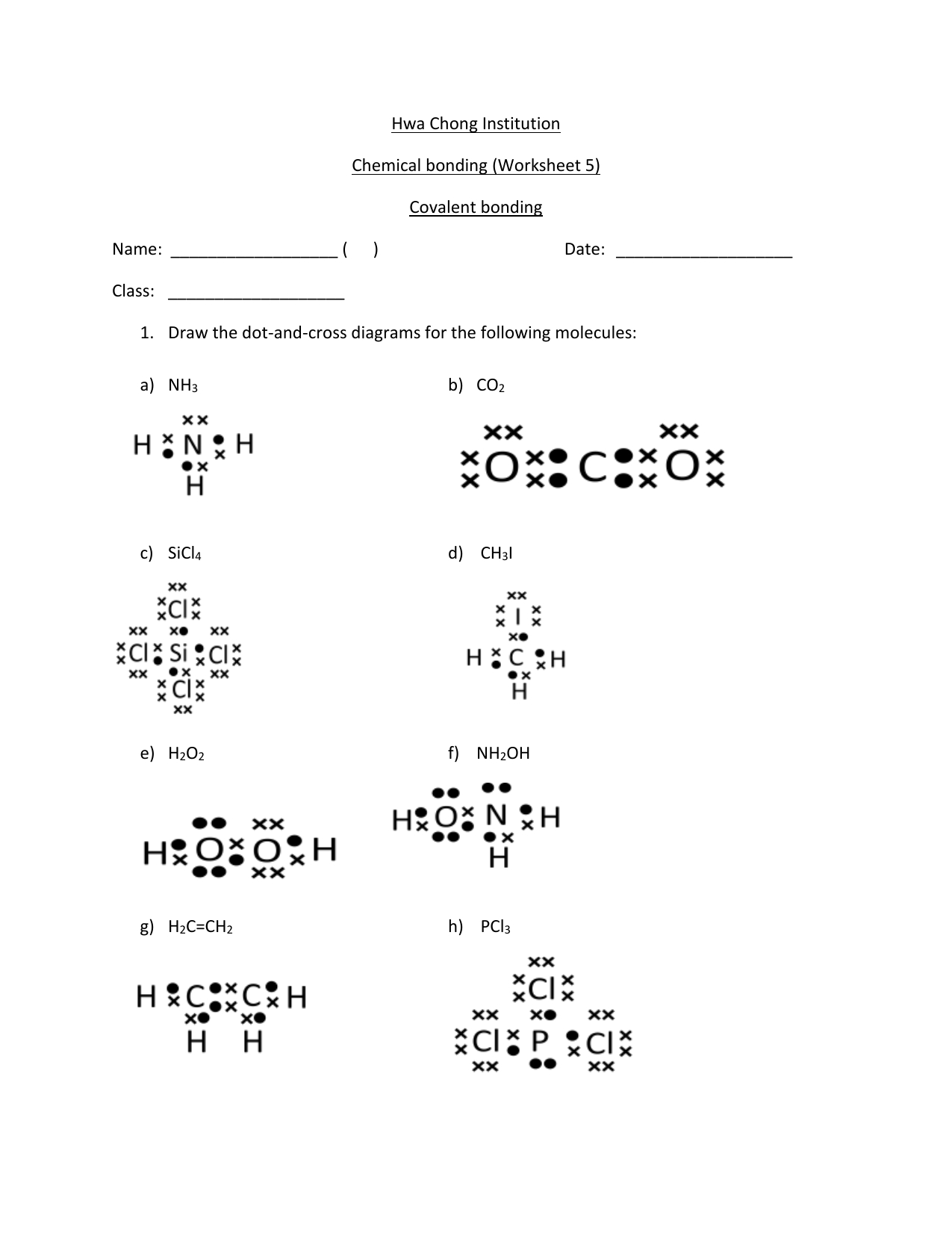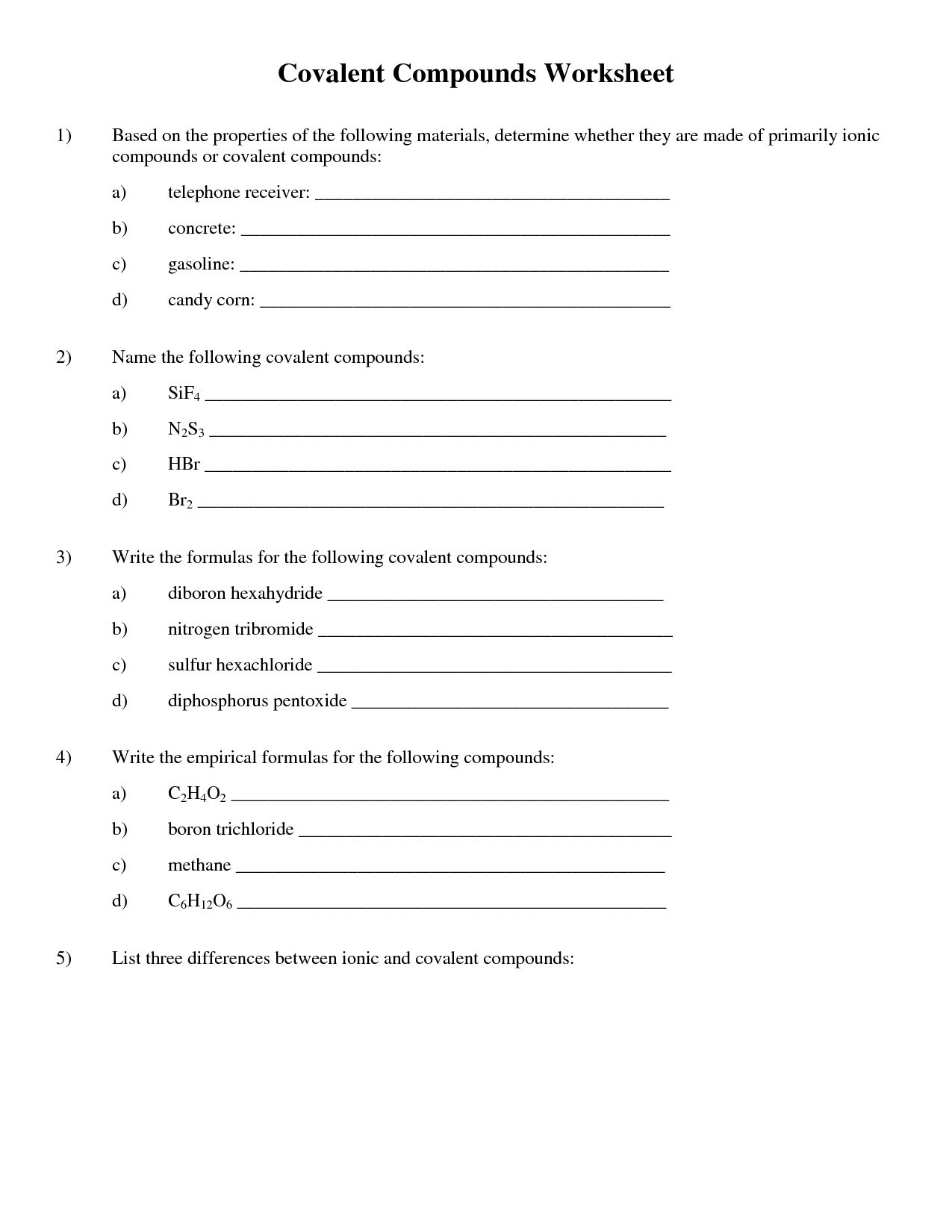
Ionic Bonding Worksheet Type 1 Practice Ionic Bonding Chemical
Student Workbook Physical Science - Chemical Bonding-"Chapter 20" Mr. Davis Chapter 20 - Chemical Bonding Vocabulary Words Vocabulary Word Definition 1. Binary Compound 2. Chemical Bond 3. Chemical Formula 4. Covalent Bond 5. Hydrate 6. Ion 7. Ionic Bind 8. Molecule 9. Non Polar Molecule 10. Oxidation Number 11. Polar Molecule 12.

50 Ionic And Covalent Bonding Worksheet
Write the formulas for the following compounds: 11) chromium (VI) phosphate ____________________________________ 12) vanadium (IV) carbonate ____________________________________ 13) tin (II) nitrite _____________________________________ 14) cobalt (III) oxide _____________________________________

Ionic And Covalent Bonding Worksheet With Answers —
3.1.1. Covalent dot and cross 3.1.2. Ionic dot and cross 3.1.3. Which type of chemical bond 3.1.4. Bonding summary 3.2. Covalent bonding 3.2.1. Co-ordinate bonding 3.2.2. Electronegativity and polarity 3.2.3. Intermolecular forces 3.2.4. Shapes of molecules 3.3. Properties and bonding Bonding answers Bonding 3.1.1. 3.1.1.

10 Best Images of Ionic And Covalent Compounds Worksheet Naming Ionic
WORKSHEET: Chemical Bonding - Ionic & Covalent! REMEMBER. Ionic Bond Covalent Bond between a Metal and Non-Metal between a Non-Metal and Non-Metal (M + NM) (NM + NM) PART 1: Determine if the elements in the following compounds are metals or non-metals. Describe the type of bonding that occurs in the compound.

Chemistry Ionic Bonds Worksheet
Chemical Bonding Worksheet Ionic Bond between a Metal and Non-Metal (M + NM) Covalent Bond between a Non-Metal and Non-Metal (NM + NM) or (Metalloid + NM) Determine if the elements in the following compounds are metals or non-metals. Describe the type of bonding that occurs in the compound. Compound Element 1 (metal or non-metal?)

Worksheet On Chemical Bonding
The Bonding worksheets cover covalent, ionic and metallic bonding, available with three levels of support: scaffolded, partially scaffolded and unscaffolded. You will find model answers to all levels of these worksheets in the teacher guidance. The Bonding worksheets cover the following topics:

Chemical Bonding Ionic And Covalent Worksheet
Chemical bonds are the attractive forces that hold atoms together in the form of compounds. A chemical bond is formed when electrons are shared between two atoms. There are three types of bonds: covalent bonds, polar covalent bonds and ionic bonds. The simplest example of bonding is demonstrated by the H 2 molecule.

Chemical Bonding Ionic And Covalent Worksheets
Model 1: Ionic Bonding The compounds formed by metals and non-metals contain ionic bonds. Metal atoms lose electrons to form cations. Non-metal atoms gain electrons to form anions. The interactions between cations and anions are ionic and are often called ionic bonds.

Chemical Bonds Ionic Bonds Worksheet
WORKSHEET: Chemical Bonding - Ionic & Covalent! REMEMBER. Ionic Bond between a Metal and Non-Metal (M + NM) Covalent Bond between a Non-Metal and Non-Metal (NM + NM) PART 1: Determine if the elements in the following compounds are metals or non-metals. Describe the type of bonding that occurs in the compound. Compound Element 1 (metal or.

Ionic And Covalent Compounds Worksheet
Naming Chemical Compounds - Answers Name the following ionic compounds: 1) NaBr sodium bromide 2) CaO calcium oxide 3) Li 2 S lithium sulfide 4) MgBr 2 magnesium bromide 5) Be(OH) 2 beryllium hydroxide Write the formulas for the following ionic compounds: 6) potassium iodide KI 7) magnesium oxide MgO 8) aluminum chloride AlCl 3

Covalent Bonding Worksheet —
COVALENT BONDING Name Covalent bonding occurs when two or more nonmetals share electrons. attempting to attain a stable octet of electrons at least part of the time. For example: Note that hydrogen Is content with 2, not 8. electrons. Show how covalent bonding occurs in each of the following pairs of atoms. Atoms may

Ionic and Covalent Bonding Worksheet Answer Key
Download all files as a compressed .zip. Title. Introduction to Ionic & Covalent Bonding. Description. Use simulation to observe properties of ionic and molecular compounds in conjunction with MSDS sheets. This is meant to introduce ionic and covalent bonding as well as the properties associated with the resulting compounds. Duration. 60 minutes.

Worksheet Chemical Bonding Ionic & Covalent
A. A hydrogen atom with a slight positive charge is attracted to a negative charge of another molecule or atom. Two atoms share electrons so they can fill their outer shells. B. Two atoms share electrons so they can fill their outer shells. The constant motion of electrons and the creation of charge imbalances bonds two molecules together.

Worksheet Chemical Bonding Ionic And Covalent —
B. Covalent Bonds. 1. Structures. Unlike ionic bonds, covalent bonding involves the sharing of electrons between atoms and is the most-common type of bonding in organic molecules. It is assumed that only electrons in the valence shell are involved in the formation of covalent bonds. Suppose we have two H atoms forming molecular hydrogen: H(g.

Ionic And Covalent Bonding Worksheet
Chemical bonds are the attractive forces that hold atoms together in the form of compounds. A chemical bond is formed when electrons are shared between two atoms. There are three types of bonds: covalent bonds, polar covalent bonds and ionic bonds. The simplest example of bonding is demonstrated by the H 2 molecule.

Covalent Bonding Worksheet
Share / Print Worksheet. potassium carbonate. aluminum phosphate. •Covalent bondsinvolve shared electrons,sothere are no charges• You still dropthe ending of the second atom and replace it with the suffix "-ide". •Covalent bonds do not ignore the subscript numbers•Prefixes are used in the name,they tell you how many atoms of.